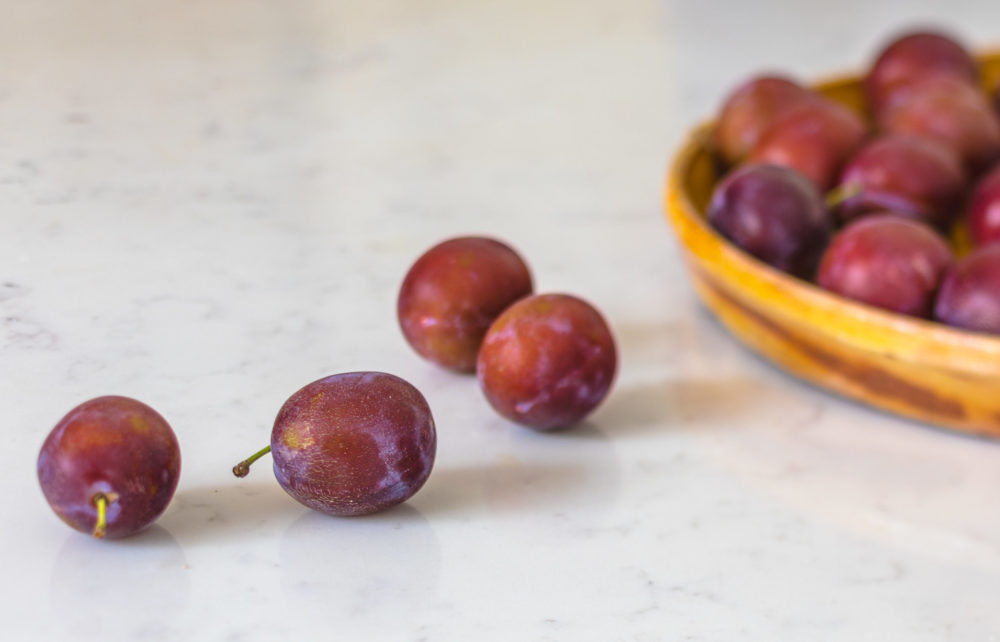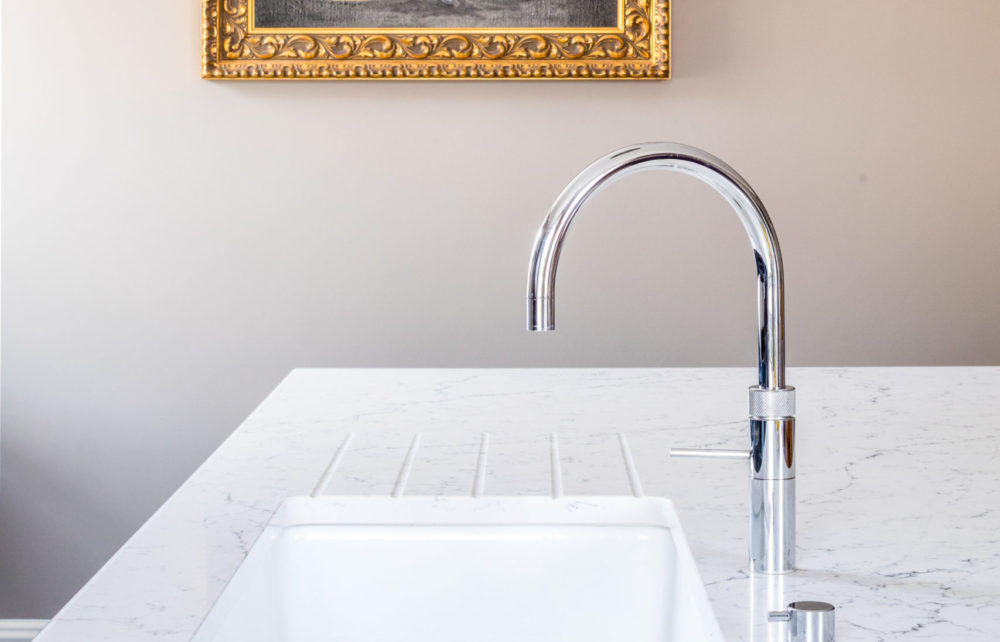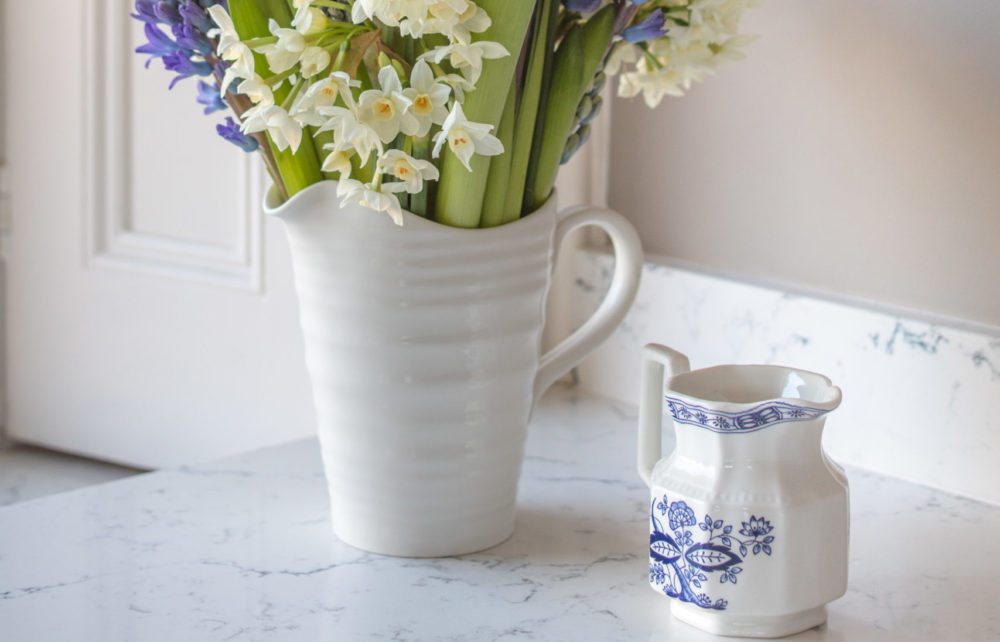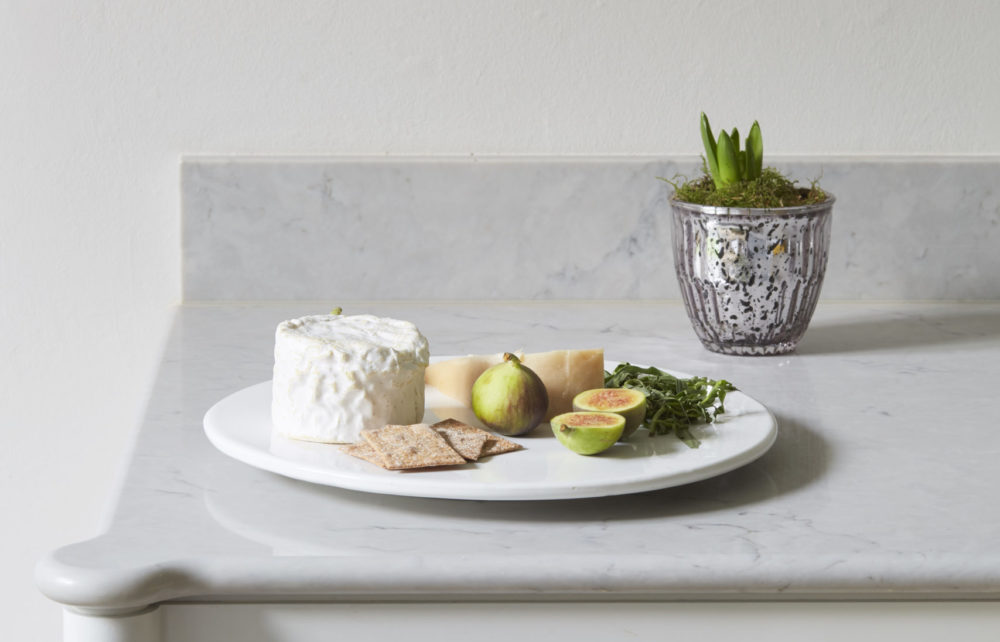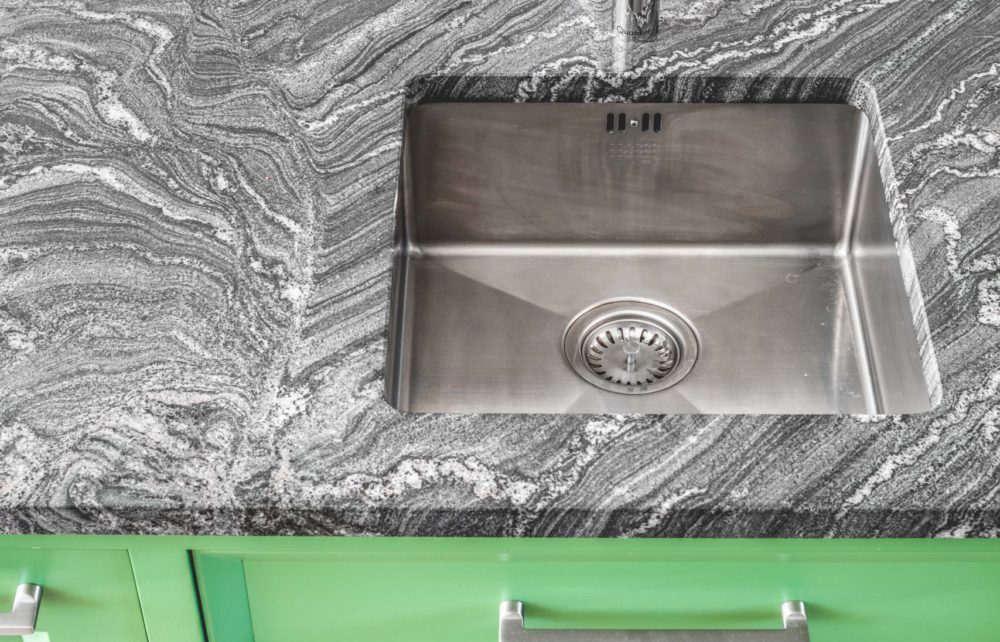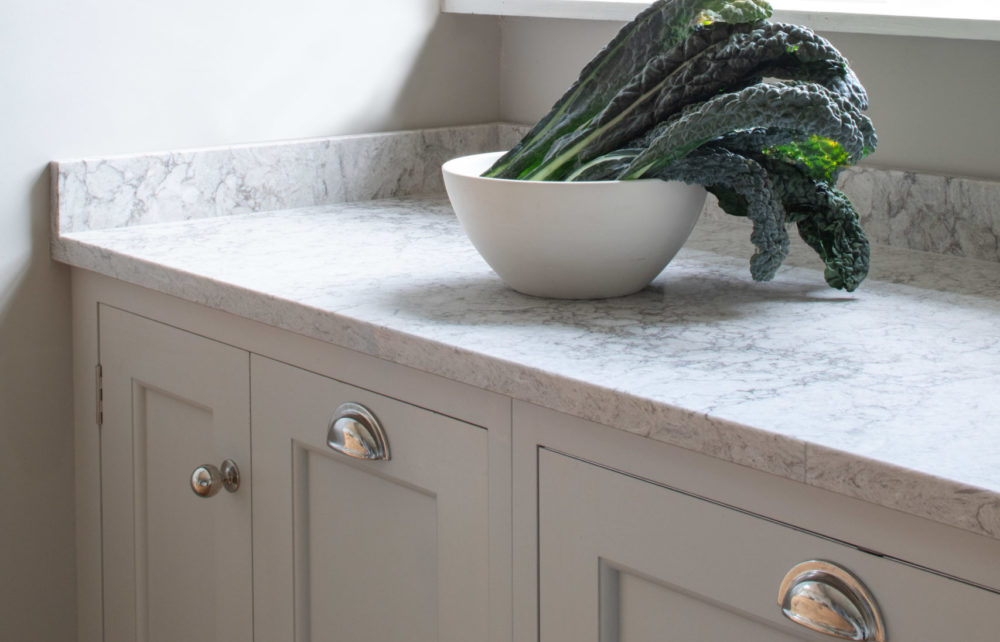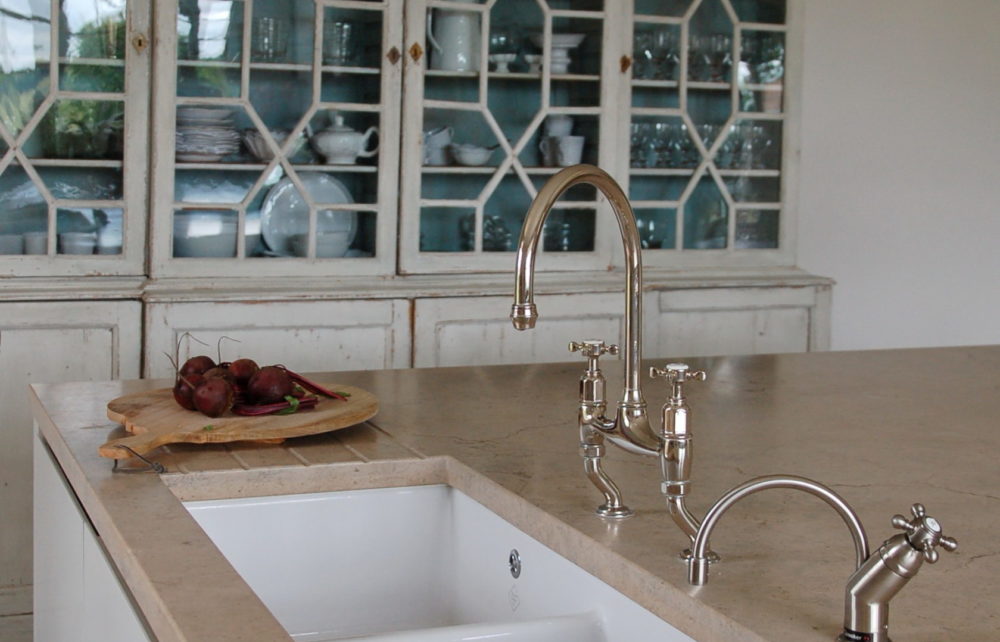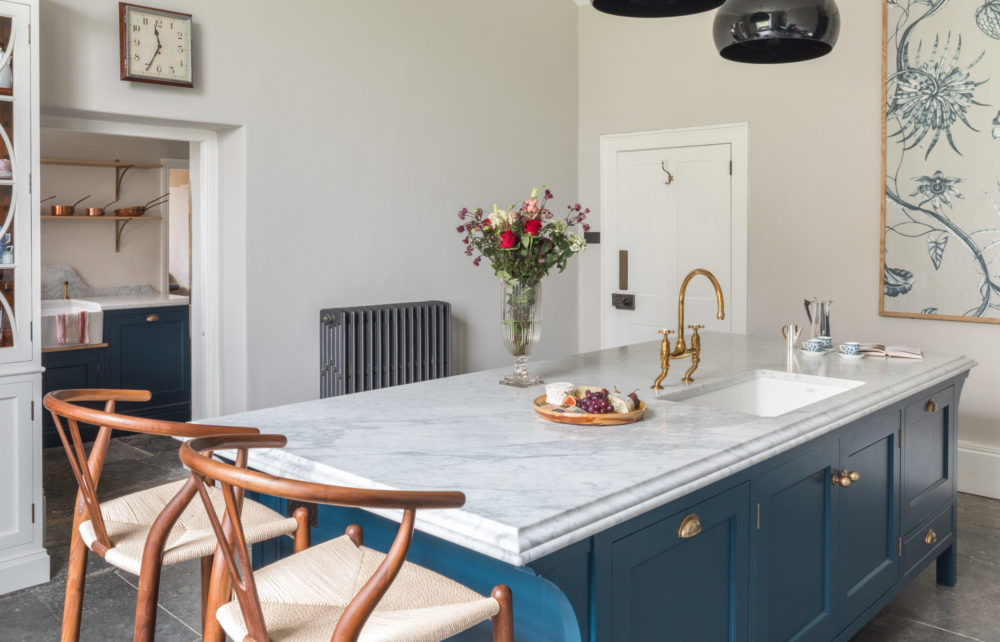Journal
At some stage, most clients commissioning a bespoke kitchen design will have to choose a kitchen worktop, with the debate often falling between marble vs quartz. From granite to concrete; limestone to composite, there is a never-ending array of beautiful materials, with differing qualities and finishes to chose from when considering your worktop.
With so much choice it can be daunting. It is a big decision. It can be very beneficial to visit the big suppliers. Landford Stone is not far from Salisbury, Bath Granite & Marble is in Frome, and viewing large slabs of marble; stone; composite as a whole gives you, the client, a far better idea how the top will look in situ. Both companies will be able to offer advice on what would suit you and your home.
At Guild Anderson we keep an extensive range of mainly man-made stone displays at the design studio in Tisbury. The are all small sample sizes that are easy to handle, and can be put together with your scheme along with colours, flooring and hardware. Our clients find this really helps visualise how their final beautiful kitchen is going to look.
Marble vs Quartz – Fabricated Stone
Quartz is a completely engineered stone and doesn’t naturally exist in the format that is used.
Natural quartz is a hard mineral but it not usable in the state that it is found in, and in order to produce it the natural quartz crystals are mined before being ground down into a fine dust resin.
Binders are then added under very high heat and pressure which forms a solid slab.
During the process, pigments are added to change the colour, this gives a huge variation in style and overall look of the quartz that is available to the client.
Quartz worktops are also naturally scratch resistant – only three other natural materials can scratch it; diamond, sapphire and topaz. They are also tougher and stronger than granite and have double the impact resistance. However they are not all heat resistant so it is best to always use a trivet of some sort under a very hot pan. If there was a marble vs quartz hardness challenge, quartz would win hands down.
Due to its unique resistance to moisture; bacteria and germs can’t permeate into the quartz in the way that can happen with natural worktops. This makes quartz a more hygienic alternative to natural stones as it simply requires a damp cloth, and a mild detergent, to keep it looking really excellent and your worktop will never need to be sealed.
Marble vs Quartz – Natural
Firstly the science bit; marble is created from sedimentary dolomite or limestone rock through a natural process meaning that each piece is unique in appearance.
The wide range of hues and colours found in marble are determined by the area of origin and the proportional mix of minerals in the original limestone. The beautiful and distinctive veining this stone is known for comes from the impurities trapped in the limestone when earth’s extreme heat and pressure transformed it into marble.
We are noticing at Guild Anderson that natural stone is increasingly coming back into fashion, despite the need for greater maintenance and care, we find that more of our customers really do love the look and feel of it especially marble.
However, the composite replicas are now a very good body double and you don’t run the risk of staining or scratches with the man-made tops. Despite this you can spot the differences between man-made and real stone, the patina and veining on real stone is always varied and no two are ever the same, so it is hugely important that clients buy from one slab in order to keep the variation to a minimum. The marble vs quartz question is not easy to answer.
To create a run of cabinets there is often the need for a join somewhere in the worktop that sits on top. It should be noted that clients often make the decision to go with man-made stone as those slabs come in larger sizes; which if you are having a large island often negates the need for a join.
Marble tops should be sealed 2-4 times a year while granite 1-2 times. Sadly this sealing doesn’t guarantee a stain resistant top and you still need to be extremely careful when dealing with marble, hence it is probably not an ideal worktop for a young family or if you think you might struggle to keep it clean. It depends on your tolerance level, while some can cope with a few dints and marks, others will find it upsetting to see lemon or red wine stains.
Hannah has first hand experience of staining on her beautiful Dura Blue Limestone worktop in her kitchen. “I have come to live with the stains in our kitchen at home, it has coped incredibly well from a knock and chip point of view but there are many brownish marks where the rhubarb was left unattended, or lime juice from a Thai salad has spilt off the chopping board. I have learnt from experience that the best way to deal with this ‘etching’ of the surface is to take kitchen roll and daub some olive oil on and then rub in. Sadly you can’t remove the brown stain, but you can retain the shine of the stone, and it allows the colour to mellow and tone with the rest of the worktop. (NB I wouldn’t recommend using oil on a marble surface however).”
In short, these natural stones are a timeless option and their beauty will not fade over time. They will never go out of fashion and are a classic choice for both kitchens and bathrooms.
To discuss marble vs quartz in your home or if you are interested in discussing your bespoke kitchen design, please contact our team at design@guildanderson.co.uk or call us on 01747 820449


